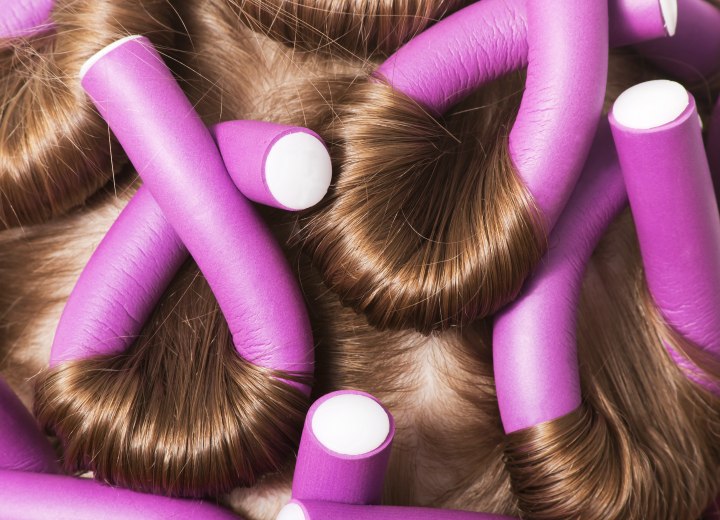Perm Resistant Hair

When my salon called a few days later to check on how I liked the results, I explained what had happened. My stylist was very understanding and immediately scheduled me for a complimentary appointment to fix the issue. During my return visit, she examined my hair carefully and commented that it looked very healthy, which it was even before the original perm. She recommended trying a piggy-back perm technique this time, using smaller, traditional hard rods to create tighter, more durable curls.
The second perm process went smoothly, and when I left the salon, my hair looked fantastic with even more defined curls than the first attempt. I was thrilled with the results. However, by the end of that same day, I could already see the curls beginning to drop out again, following the same pattern as before. This is really frustrating because my hair has never been difficult to perm in the past. I've had successful perms before without any problems. What could be causing my hair to suddenly become so resistant to perming when it never has been before?
First, let's consider the cumulative effects of chemical processing and styling damage. If you've been getting regular perms over the years, the ends of your hair have likely been exposed to perm chemicals significantly more times than the hair near your roots. Think about it this way: the hair at your scalp might have been permed three or four times, while the oldest hair at your ends could have been chemically processed eight, ten, or even more times. This repeated chemical exposure can alter the hair's protein structure, making it less responsive to new chemical treatments.
Environmental factors also play a crucial role in perm resistance. Daily exposure to chlorinated water from swimming pools, hard water minerals, styling product buildup, pollution, and even UV damage from sun exposure can create a barrier on your hair shaft. These contaminants can prevent perm solutions from penetrating evenly into the hair cuticle, resulting in patchy or weak curl formation.
Your hair's natural aging process might also be a factor. As we get older, our hair's texture and porosity can change gradually. Hair that was once easily permeable to chemicals might become more resistant, or conversely, some sections might become overly porous while others remain resistant. This can create uneven results where some areas hold the curl beautifully while others fall flat.
The timing and technique of your perm application are critical as well. Your stylist's initial assessment about uneven saturation was likely accurate. When perm solution doesn't fully penetrate certain sections of hair, those areas will appear to take the curl initially but will quickly revert to their natural state. The piggy-back technique your stylist used is actually an excellent approach for resistant hair, as it ensures more thorough chemical processing by applying the solution in multiple stages.
However, since even this intensive method didn't provide lasting results, it suggests that the problem might be more deeply rooted in the condition of your hair itself. The ends of your hair, having been subjected to months or years of styling, heat damage, and previous chemical treatments, may have reached a point where the cuticle is too damaged to maintain a curl pattern effectively. Even healthy-looking hair can have microscopic damage that affects its ability to hold chemical processes.
Another possibility is that your hair's porosity has become uneven throughout its length. Highly porous sections might initially grab the curl but then lose it quickly because the damaged cuticle can't maintain the new structure. Conversely, sections with low porosity might resist the perm solution entirely, never fully processing in the first place.
The solution moving forward likely involves a multi-pronged approach. First, consider having a professional porosity test done to understand how your hair is responding to moisture and chemicals. A skilled stylist can perform a strand test using different processing times and techniques to determine the optimal approach for your specific hair condition.
You'll probably need to sacrifice some length to remove the most damaged portions of your hair. While this might seem drastic, cutting off even two to three inches of the oldest, most processed hair can make a dramatic difference in how well your hair responds to future perms. Fresh, less-damaged hair will not only take the perm more evenly but will also hold the curl pattern much longer.
©Hairfinder.com
See also: More about perms